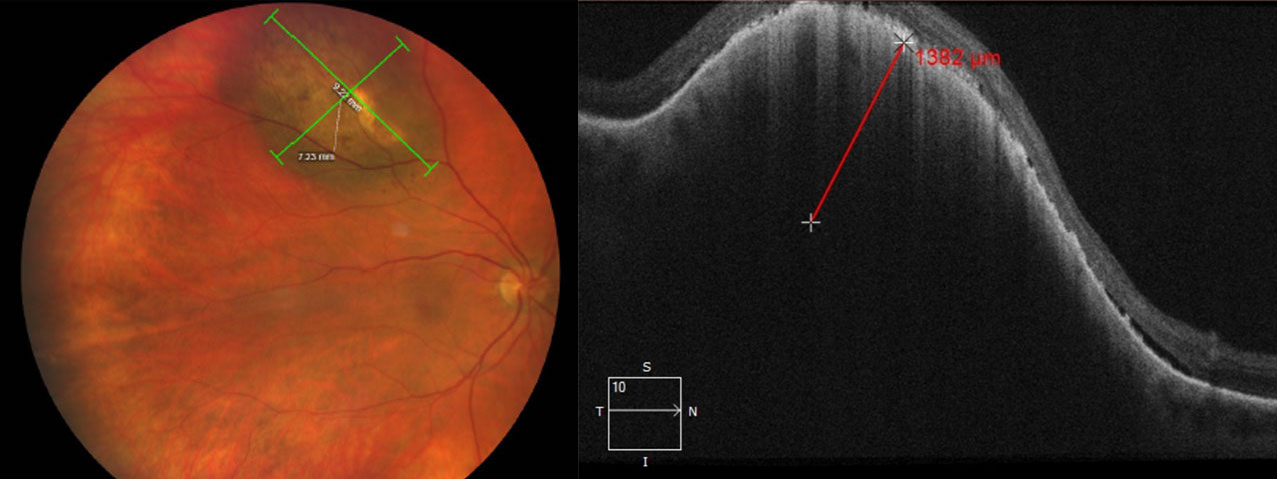 |
| Those living in North Germany were found to have a lower rate of uveal melanoma compared to those in South Germany, suggesting a higher altitude may be a risk factor. Photo: Amy Bade, OD. Click image to enlarge. |
A study comparing uveal melanoma incidences in different German states found that the disease is more common in males and has higher incidences in the more northern parts of Germany. Researchers collected incidence data from 2009 to 2015 on the entire German population via the German Center for Cancer Registry.
The total number of patients with uveal melanoma included in the study was 3,654. Of these, 467 (12.8%) had iridial and ciliary body tumors. The overall age-standardized incidence rate (ASIR) was 6.41 per one million people, and it was generally higher in males than females (6.67 vs. 6.16). Higher crude incidence rates were found in the northeastern states (12.5 per million in Mecklenburg-Vorpommern) compared with the southwestern states (2.1 per million in Hessen). Additionally, multivariate analysis demonstrated that women, younger patients and patients living in Berlin had the highest overall survival rates.
The researchers say their regional findings follow the same geographic distributions previously described in central European countries, where higher latitudes show higher incidences. Globally, the highest incidences of uveal melanoma are among Australian men (10.9 per million) and the lowest are reported in Japan (0.3 per million). “The mentioned high rate in Australia may be attributable to its majority susceptible white population of European origins,” they noted.
“Older age at diagnosis, as well as diagnoses of ciliary body tumors, was associated with worse overall survival,” the researchers pointed out. “The better survival in younger age groups was attributed to the underlying histological features of uveal melanomas commonly associated with younger age.” They noted other factors may have also influenced incidence rates such as social and psychological factors that prompt or discourage individuals from seeking treatment.
“Better survival rates for women were a notable finding of our study,” the researchers said. “This, as a number of studies have suggested, could be attributed to women’s hormonal profile, varied genetic predispositions compared with men and/or differences in occupational factors including amount of sun exposure. Other studies have attributed the differences to a tendency toward tumor extension or to the involvement of ciliary body extensions. We believe that those clinical aspects should be considered in parallel with the relevant molecular, genetic and environmental backgrounds of each patient.”
This is the first study to report nationwide uveal melanoma incidences in Germany. The researchers say that some of the differences between states may be due to the degree of registry completion—for example, in Hessen and Baden-Wuerttemberg, registries were still being built up, since they were founded between 2007 and 2009—and the amount of information reported. Overall, they report that incidence in Germany is 6.41 per million, that men show higher incidences and lower survival rates than women and that patients with choroidal disease have a higher chance of survival than those with ciliary body of iridial tumors. Those from former East Germany had similar five-year survival rates to those from former West Germany.
Alfaar AS, Saad A, Wiedemann P, et al. The epidemiology of uveal melanoma in Germany: a nationwide report of incidence and survival between 2009 and 2015. Graefes Arch Clin Exp Ophthalmol. October 4, 2021. [Epub ahead of print]. |

